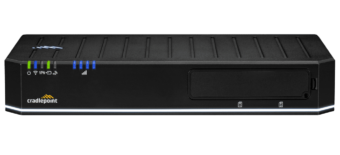Carrier Aggregation refers to the technique whereby the 4G/5G modem bundles multiple portions of the spectrum so that the user has greater bandwidth, resulting in higher data rates. Thanks to these developments, mobile networks are increasingly being used as primary internet connections for enterprises, governments and retail.
The Carrier Aggregation technique combines two, three or more carriers into a single channel. These carriers can be from the same or a different frequency band. With the Carrier Aggregation technique, the regular data rate can double or triple by increasing the bandwidth. It is predicted that Carrier Aggregation for 5G will play an important role in expanding coverage and increasing network capacity.
Carrier Aggregation is a technique that combines multiple frequency bands to give you bandwidth, resulting in faster data rates. In wireless communications, bands are spectra of specific frequencies used for communication between devices. If there is only one band to send and receive data, it takes longer to complete the operation. If you can put several frequencies together, you can communicate and send data at the same time in a fast and efficient manner.
In Carrier Aggregation, multiple frequency bands are assigned to one device. The frequency bands are also called component carriers. There are six specific frequencies: 1.4 MHz, 3 MHz, 5 MHz, 10 MHz, 15 MHz and 20 MHz. Of these, you can combine up to 5 component carriers to transmit a total bandwidth of up to 100 MHz. If you combine two component carriers, we call this 2CA; if there are three components: 3CA, and so on. The more component carriers combined, the higher the data rates.

In Carrier Aggregation, component carriers are allocated in three ways. First, via Intra-band Carrier Aggregation. When the component carriers belong to different frequency bands, they are placed in separate frequency blocks. This arrangement is the most complex variant, but produces a much better data rate. Inter-band carrier aggregation is further divided into two parts: Contiguous and Non-contiguous.
Contiguous Intra-band aggregation is the easiest form of 4G LTE carrier aggregation to implement. In this case, the carriers are contiguous. In this case, you only need a single transceiver, since the signal is considered a single augmented signal.
Non-contiguous intra-band aggregation is somewhat complicated because the component carriers come from the same frequency band but are separated by a spectrum gap. So you need two transceivers because the signal cannot be treated as a single signal, which increases the complexity and cost.


By increasing throughput – the time it takes to transmit data from one location to another – the mobile network can deliver fast data to users in the targeted geographic area. This means that Carrier Aggregation increases the capacity of the network, which helps to increase the mobile data rate.
In addition, Carrier Aggregation also increases download and upload speeds, allows for seamless playback of high-resolution videos, and downloads large files in less time. With Carrier Aggregation, you can provide multiple users with a seamless experience and meet the enterprise’s ever-increasing demand for bandwidth.

5G Enterprise Router
1x 10 Gigabit SFP+
2Gbps Firewall Throughput
View productWe are eager to help answer your questions. Whether you are looking for technical support for your Wireless WAN solution or general information about our portfolio. Leave your message and we will get back to you soon!
Get in touch
What is the difference between bonding and carrier aggregation?
With bonding different WANs – think 4G, Fiber, VDSL – are combined so that a larger bandwidth can be realized. The difference with CA is that with that technique the router can simultaneously be connected to 2 or more 4G/5G frequency bands or channels of the mobile network of 1 mobile network operator.





